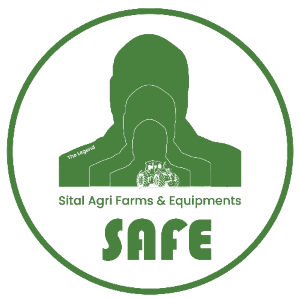How to Navigate the Complexities of Engine & Drivetrain Repairs for Construction Equipment
Construction equipment is the backbone of many industries, from infrastructure to agriculture. But what happens when these machines face downtime due to engine or drivetrain issues? Understanding the complexities and addressing these challenges effectively can save you time, money, and frustration.
Understanding Engine and Drivetrain Basics
What are Engines and Drivetrains?
An engine provides the power, while the drivetrain delivers it to the wheels or tracks. Together, they ensure your equipment operates smoothly.
- Common Components in Construction Equipment Engines: Each part plays a critical role from pistons to camshafts. Neglecting minor issues can lead to significant failures.
- How Drivetrains Work in Heavy Machinery: Drivetrains distribute power using gears, shafts, and clutches. Regular inspection of these parts prevents breakdowns during operations.
Signs Your Equipment Needs Repairs
- Common Engine Issues to Watch Out For: Unusual noises, overheating, or excessive smoke indicate engine problems. Ignoring these can exacerbate the issue.
- Drivetrain Symptoms Indicating Repairs: Vibrations, jerky movements, or difficulty in gear shifting signal drivetrain troubles.
- Importance of Early Diagnosis: Addressing minor issues early can prevent costly repairs later.
Essential Tools for Repairs
- Must-Have Tools for Engine Repairs: To tackle engine problems, invest in high-quality wrenches, torque tools, and diagnostic scanners.
- Specialized Tools for Drivetrain Maintenance: Gear pullers, hydraulic presses, and alignment kits are indispensable for drivetrain work.
Step-by-Step Repair Process
- Diagnosing the Problem: Use diagnostic tools to pinpoint issues accurately before starting repairs.
- Disassembling Engine Components: Follow manufacturer manuals to dismantle parts systematically. Labelling components ensures hassle-free reassembly.
- Fixing Drivetrain Issues: Inspect for worn gears or misalignments. Replace faulty components promptly.
Safety Considerations During Repairs
- Personal Protective Equipment (PPE): To minimize risk during repairs, always wear gloves, goggles, and helmets.
- Common Safety Mistakes to Avoid: Never skip locking the equipment or testing components after repair.
When to Call in Professionals
- Identifying Repairs Beyond Your Expertise: Complicated repairs like crankshaft replacements require professional attention.
- Finding a Reliable Technician or Service Center: Research certified repair centres to ensure quality work.
Preventative Maintenance Tips
- Scheduling Regular Checkups: Routine inspections can identify and fix minor issues before they escalate.
- Proper Cleaning and Lubrication: Dirt buildup can damage components. Regular cleaning and lubrication are crucial.
- Proactive Replacement of Worn-Out Parts: Replace worn components to avoid sudden operational breakdowns.
FAQs on Engine & Drivetrain Repairs
Que. What’s the average cost of repairs?
Ans. Costs vary but expect $500–$5000 based on the issue’s severity.
Que. How long do repairs usually take?
Ans. Minor fixes take hours, while complex repairs may require weeks.
Que. Can DIY fixes void my warranty?
Ans. Yes, if unauthorized repairs breach warranty terms.
Que. What are the benefits of professional servicing?
Ans. Pros bring expertise, proper tools, and warranty-safe solutions.
Que. How can I extend the lifespan of my equipment?
Ans. Regular maintenance, proper use, and timely repairs are key.
Que. Are OEM parts better than aftermarket?
Ans. OEM parts offer better compatibility and durability but may cost more.
Conclusion
Navigating engine and drivetrain repairs for construction equipment may seem daunting, but with the right knowledge, tools, and practices, you can tackle most challenges effectively. When in doubt, consult a professional to safeguard your equipment and investments.

